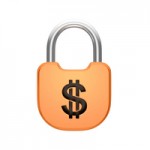 There was a recent story of a high profile blogger who had his smartphone password compromised and had virtually his entire online existence put at risk. To add insult to injury, the hackers used the information they gained about him to remotely delete all the information on his laptop – including irreplaceable family photographs.
There was a recent story of a high profile blogger who had his smartphone password compromised and had virtually his entire online existence put at risk. To add insult to injury, the hackers used the information they gained about him to remotely delete all the information on his laptop – including irreplaceable family photographs.
Imagine what would happen if you got up tomorrow morning and your smartphone was gone. What bank and email passwords are on your mobile device? What about documents and spreadsheets that you’ve created for work? How many personal photos are on your device? Most people would be devastated if such a large amount of their personal information were suddenly lost or stolen.
Here’s some advice on how to protect your mobile data.
Password Protect Your Smartphone. At a minimum, you should configure your smartphone so that it can’t be accessed without first entering a password. While these protections aren’t foolproof, they can slow down an identity thief. In fact, it’s probably best to use all of the security features that are available for your device.
Be Careful Where You Connect to the Internet. If you use your device connect to the Internet over public Wi-Fi networks like you’d find at your local coffee shop, make sure that you only log in to websites that allow you to connect securely via HTTPS. If you can’t securely connect when you’re logging in, then wait until you can get a secure connection before you go onto the Internet.
Stay Current With Software Updates. When it’s first released, no mobile device operating system or application is going to be 100% secure. Vulnerabilities are always being discovered, and device and software manufacturers are constantly releasing updates to patch those vulnerabilities. Your mobile data will be safer if you get into the routine of staying up-to-date with those patches.
Use Security Software. Depending on the type of device you use, you can use an app that can let you exercise more control over the security of your device. For example, there are “Find My iPhone” apps that can help you locate your iPhone, which can help you quickly determine whether you’ve just misplaced it or whether it’s been lost or stolen and is therefore at risk. Alternatively, you can check to see if your device offers any apps that let you remotely “wipe” your device clean if it ever is stolen. Your data being gone is one thing, but having in wind up in the hands of someone who looks to steal from you or otherwise do you harm is even worse.
Back Up All Your Data Frequently. Remember that it’s not just thieves that are a threat to your mobile data. You might drop your smartphone or mobile device and have it break. Unless you keep backups of all the data from your device, you risk losing everything.
Finally, make sure to remember the need for physical security. This means not leaving your device lying around. If you’re not using it, put it in your pocket or briefcase or purse.
Tags: Banking Advice, mobile data, Online Banking, protect mobile data
This entry was posted
on Monday, September 24th, 2012 at 12:01 pm and is filed under Online Banking.
You can follow any responses to this entry through the RSS 2.0 feed.
You can leave a response, or trackback from your own site.
 There was a recent story of a high profile blogger who had his smartphone password compromised and had virtually his entire online existence put at risk. To add insult to injury, the hackers used the information they gained about him to remotely delete all the information on his laptop – including irreplaceable family photographs.
There was a recent story of a high profile blogger who had his smartphone password compromised and had virtually his entire online existence put at risk. To add insult to injury, the hackers used the information they gained about him to remotely delete all the information on his laptop – including irreplaceable family photographs.











